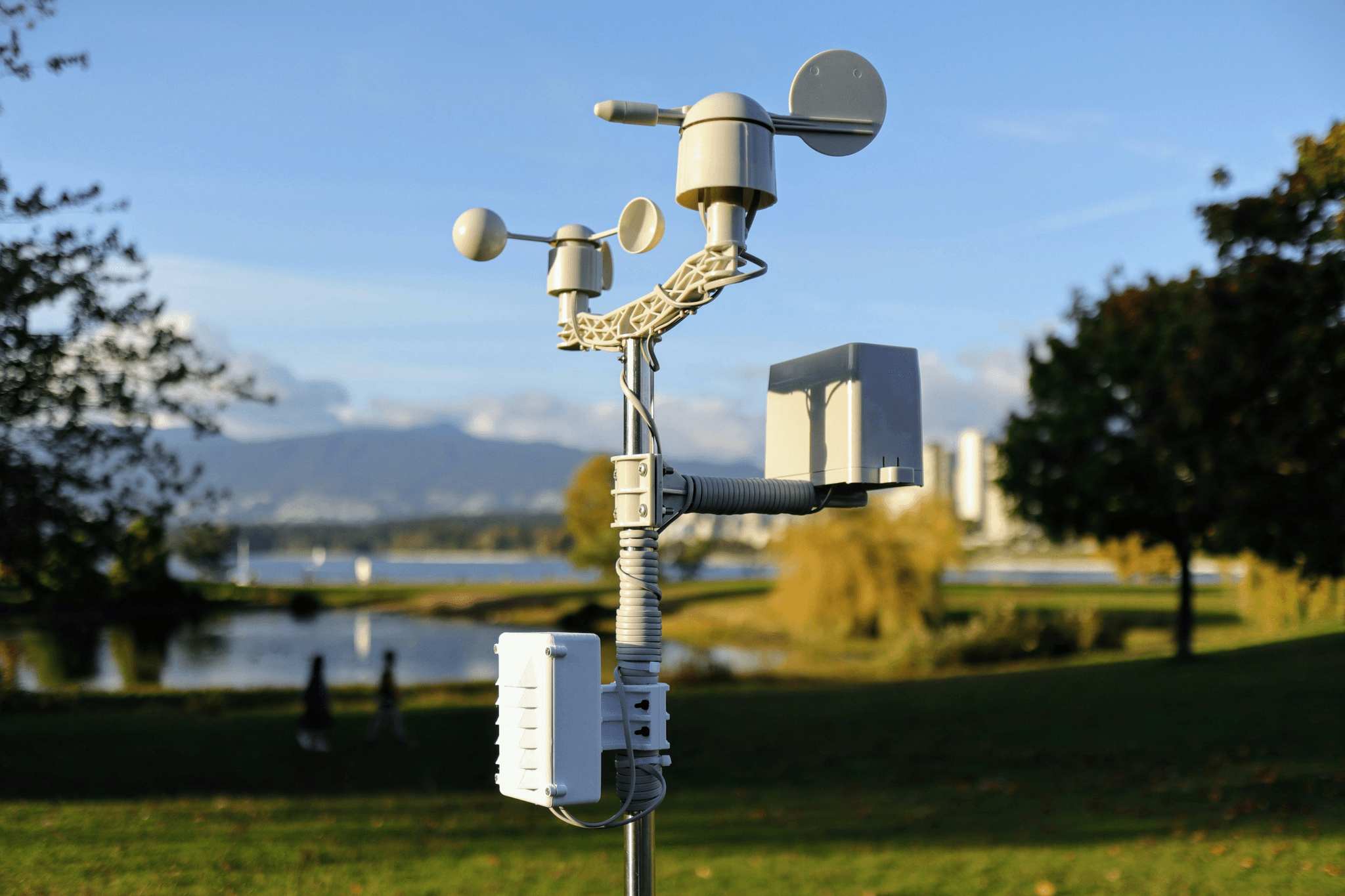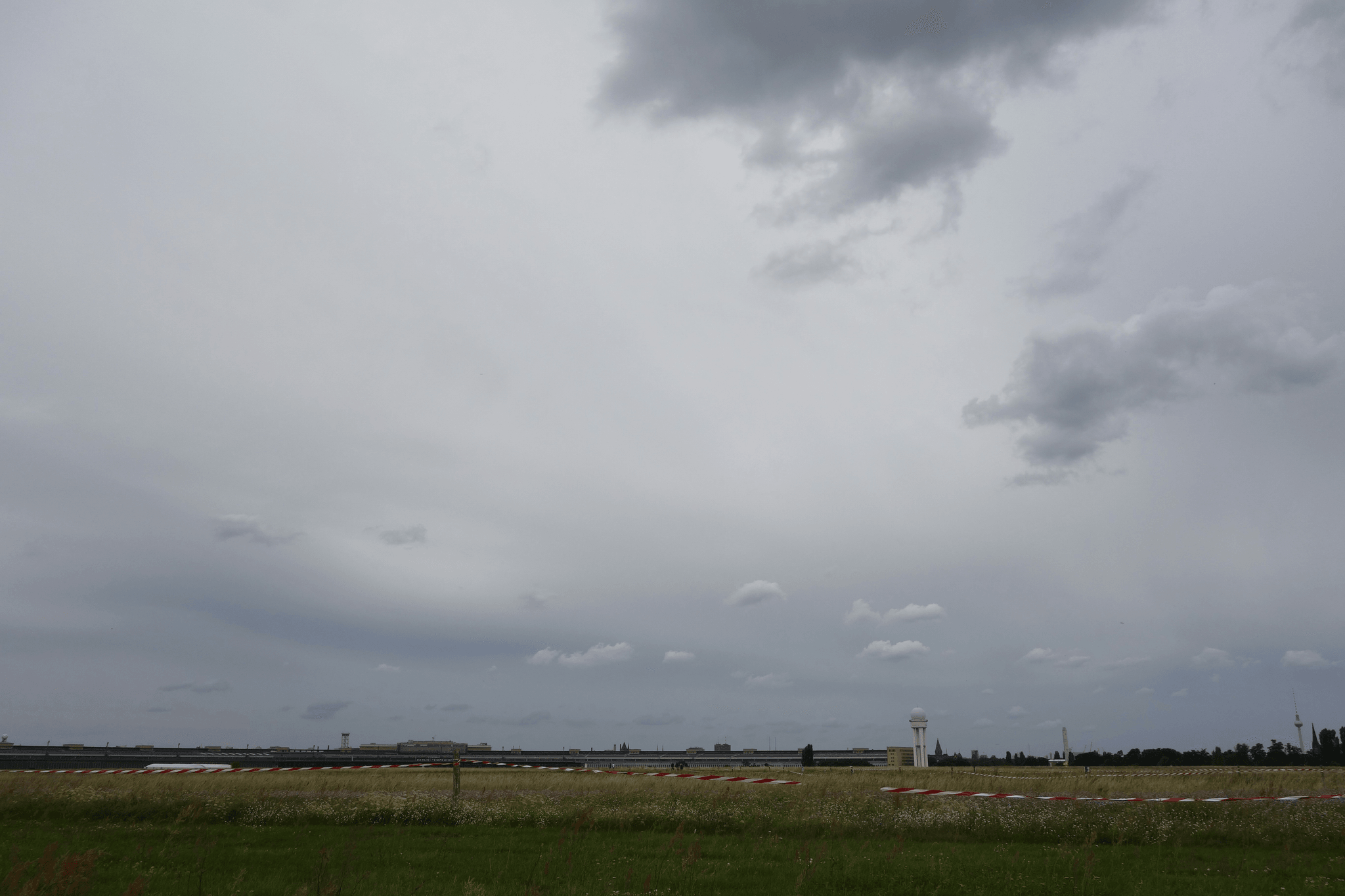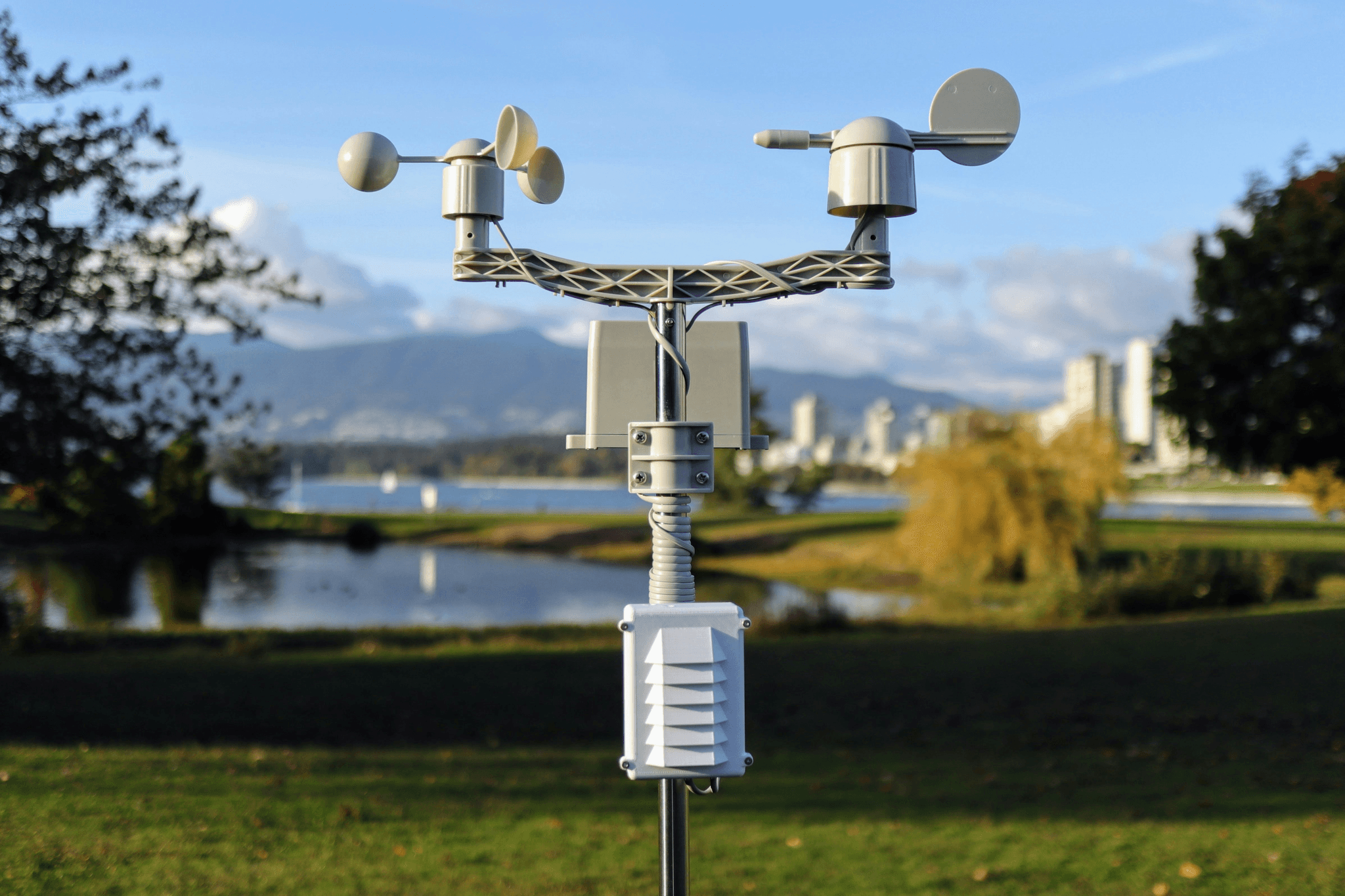Introduction
In the dynamic world of aviation, accurate weather information is not just beneficial; it’s essential. This is where the Automated Weather Observing System (AWOS) comes into play, revolutionizing how airports monitor and report weather conditions. As we delve into the significance of AWOS systems, we’ll uncover their critical role in enhancing safety and efficiency in flight operations.
Understanding the Importance of AWOS Systems
The importance of AWOS systems cannot be overstated. These intelligent automated airport weather stations provide real-time data on various meteorological parameters, ensuring that pilots and air traffic controllers have access to crucial information at all times. By answering questions like What is an AWOS? and understanding its capabilities, stakeholders can appreciate how these systems contribute to safer skies.
Exploring Cost-Effective AWOS Solutions
Cost-effectiveness is a major consideration for airports when implementing technology like an AWOS system. Fortunately, there are numerous budget-friendly solutions available that still deliver high-quality data without breaking the bank. Exploring options such as Haisen's Aviation Automatic Weather Observation Station can reveal how advanced technology can be both affordable and reliable for modern airport needs.
The Future of Automated Weather Observing
Looking ahead, the future of automated weather observing promises exciting advancements that will further enhance aviation safety and operational efficiency. With continuous improvements in sensor technology and data analytics, we can expect even more precise forecasting capabilities from systems like AWOS and ASOS (Automated Surface/Weather Observing Systems). As we embrace these innovations, it’s essential to consider how they will shape our understanding of aviation meteorology in years to come.
What is an AWOS?

Automated Weather Observing Systems (AWOS) are essential tools in modern aviation, designed to provide accurate and timely weather information. But what exactly is an AWOS? It’s a sophisticated network of sensors and software that continuously monitors weather conditions at airports, ensuring that pilots and air traffic controllers have the data they need for safe operations.
Defining Automated Weather Observing System
An Automated Weather Observing System (AWOS) is a comprehensive system that automates the collection of meteorological data at airports or other locations. This system includes various sensors that measure key weather parameters such as temperature, humidity, wind speed and direction, visibility, cloud cover, and barometric pressure. The real-time data provided by an AWOS system plays a crucial role in enhancing situational awareness for pilots during takeoff and landing.
When considering what is an AWOS?, it’s important to recognize its primary function: delivering continuous updates on weather conditions to support safe flight operations. By automating these observations, airports can significantly reduce the risk of human error associated with manual reporting methods. This level of accuracy not only improves safety but also enhances overall operational efficiency.
Key Components of an AWOS System
The key components of an AWOS system typically include various sensors for measuring environmental factors such as temperature, wind speed and direction, visibility levels, cloud height detection devices, and atmospheric pressure sensors. Each component works together seamlessly to gather comprehensive weather data that can be transmitted in real time to pilots and air traffic control towers.
In addition to hardware components like sensors, the AWOS system also includes software that processes this data into user-friendly formats for easy interpretation by aviation professionals. The integration of these elements ensures that the information provided is not only accurate but also timely—allowing for quick decision-making during critical flight operations.
One common question arises: what is the difference between ASWS and AWOS? While both systems serve similar purposes in providing weather observations at airports, ASWS (Automated Surface/Weather Observing Systems) typically offers more extensive capabilities suited for larger facilities or those requiring higher levels of detail in their meteorological reporting.
Benefits of Implementing AWOS
Implementing an Automated Weather Observing System offers numerous benefits for airports looking to enhance their safety protocols and operational efficiency. Firstly, the availability of real-time weather data means that pilots receive up-to-the-minute information about changing conditions—crucial when making decisions during flight operations such as takeoffs or landings.
Secondly, using an AWOS system minimizes reliance on human observers who may be subject to fatigue or errors while reporting weather conditions manually. This automation leads to increased accuracy in reporting which can ultimately save lives by preventing accidents caused by unexpected weather changes.
Lastly, understanding FAA regulations regarding what is the AWOS system helps airport operators align with compliance requirements while pursuing funding opportunities for installation projects aimed at enhancing their automated airport weather station capabilities. In summary, investing in an AWOS not only boosts safety but also streamlines airport operations significantly.
The Role of AWOS in Aviation Safety

Automated Weather Observing Systems (AWOS) play a pivotal role in enhancing aviation safety by providing accurate and timely weather data. This information is crucial for flight operations, as it allows pilots and air traffic controllers to make informed decisions that can significantly reduce risks associated with adverse weather conditions. With the increasing reliance on technology in aviation, understanding what an AWOS is and how it functions becomes essential for modern airports.
How AWOS Improves Flight Operations
The AWOS system enhances flight operations by delivering continuous, real-time weather updates that are vital for safe takeoffs and landings. By integrating various sensors, such as those found in Haisen's Aviation Automatic Weather Observation Station, the system measures critical parameters like temperature, wind speed and direction, visibility, cloud height, and atmospheric pressure. This comprehensive data enables pilots to assess conditions before departure or during flight, ultimately leading to improved decision-making processes.
Moreover, the ability of the AWOS system to provide immediate alerts about changing weather conditions ensures that both pilots and air traffic controllers are always aware of potential hazards. The implementation of these systems has led to a marked decrease in weather-related incidents at airports worldwide. As a result, airports equipped with AWOS not only enhance operational efficiency but also prioritize passenger safety.
Real-Time Data for Pilots and Controllers
One of the standout features of an Automated Weather Observing System (AWOS) is its capacity to deliver real-time data directly to pilots and air traffic controllers. This instantaneous access to critical weather information empowers them to make quick decisions based on current atmospheric conditions rather than relying solely on outdated forecasts or reports from distant locations. For example, knowing the exact wind speed and direction can help pilots adjust their approach during landing or takeoff.
Additionally, real-time data from an AWOS system helps mitigate risks associated with sudden weather changes that could impact flight safety. When severe storms or low visibility suddenly develop near an airport, having access to up-to-the-minute information allows controllers to reroute flights or delay departures as necessary. This proactive approach minimizes disruptions while ensuring that safety remains paramount in aviation operations.
Case Studies of AWOS Success
Several case studies illustrate the profound impact of Automated Weather Observing Systems (AWOS) on aviation safety across various airports globally. One notable example involves a regional airport where implementing an advanced AWOS system led to a significant reduction in runway incursions during foggy conditions—an issue previously exacerbated by limited visibility reports from less sophisticated systems. With Haisen's Aviation Automatic Weather Observation Station providing precise measurements of cloud height and visibility levels, air traffic control was able to manage arrivals more effectively.
Another successful instance occurred at a major international airport where integrating an upgraded AWOS resulted in improved communication between ground crews and pilots during adverse weather scenarios like thunderstorms or heavy snowfall. The timely dissemination of accurate information allowed for better coordination regarding de-icing procedures and runway maintenance activities—ultimately preventing delays while enhancing overall operational efficiency.
These case studies exemplify how investing in robust automated airport weather stations can lead not only to improved operational outcomes but also foster a culture of safety within the aviation industry as a whole.
Automated Surface/Weather Observing Systems Overview

In the realm of aviation, understanding the differences between Automated Surface/Weather Observing Systems (ASOS) and Automated Weather Observing Systems (AWOS) is crucial for selecting the right system for your airport. While both systems serve the purpose of providing real-time weather data, they differ in their operational scope and intended use. This section delves into these distinctions, highlights the advantages of ASOS for airports, and offers guidance on selecting the best system to meet your needs.
Differences Between ASOS and AWOS
What is an AWOS? At its core, an AWOS system is designed to deliver essential weather information that supports flight operations. In contrast, ASOS serves a more comprehensive role by not only providing similar data but also adhering to strict standards set by the National Weather Service (NWS). One key difference between AWSS and AWOS lies in their data reporting; while both systems gather vital weather metrics, ASOS typically integrates additional sensors and provides enhanced meteorological analysis.
Moreover, what is the difference between AWSS and AWOS when it comes to functionality? ASOS stations often include features like automated precipitation measurement and advanced forecasting capabilities that are not standard with all AWOS installations. This makes ASOS particularly advantageous for larger airports or those with complex operational requirements where detailed weather reporting can significantly impact safety.
Advantages of ASOS for Airports
The advantages of using an Automated Surface/Weather Observing System (ASOS) at airports are numerous. First off, ASOS provides highly accurate real-time weather data that meets federal guidelines—ensuring compliance with FAA regulations pertaining to airport operations. This level of reliability can enhance overall safety during takeoff and landing phases by giving pilots critical information about changing weather conditions.
Additionally, an ASOS station often includes advanced features such as automated snow measurement and cloud height detection which are especially beneficial during winter months or adverse weather situations. By implementing an Automated airport weather station like ASOS, airports can improve their efficiency in managing flight schedules while minimizing delays due to unforeseen weather changes.
Selecting the Right System for Your Needs
Factors such as location, expected traffic volume, types of aircraft served, and local climate conditions should be taken into account when making this decision. For smaller regional airports where basic weather observations suffice, a standard AWOS may be adequate; however, larger hubs might benefit from the comprehensive capabilities offered by ASOS.
Furthermore, understanding what is the AWOS system according to FAA guidelines can help you navigate compliance issues effectively while considering funding opportunities available for installation projects. Each option has its merits depending on operational needs; therefore investing time in evaluating these systems will lead you toward making informed decisions that enhance safety and efficiency at your airport.
Haisen's Aviation Automatic Weather Observation Station

Features of Haisen's AWOS
Haisen’s AWOS boasts an impressive suite of features that enhance its functionality as an Automated Weather Observing System (AWOS). It employs various sensors to measure temperature, wind speed and direction, visibility, cloud height, and atmospheric pressure—all vital parameters for safe flying. Furthermore, the system integrates seamlessly with existing airport technologies to deliver accurate weather updates in real time.
One of the standout aspects of Haisen's AWOS is its user-friendly interface that allows easy access to weather data for both ground staff and pilots. The system can also be customized to meet specific airport needs while adhering to FAA regulations regarding automated airport weather stations. This flexibility makes it a preferred choice among many airports looking to implement or upgrade their AWOS systems.
Applications in Modern Airports
In modern airports, the applications of Haisen’s Aviation Automatic Weather Observation Station are vast and varied. From enhancing flight safety by providing precise real-time data to improving operational efficiency during adverse weather conditions, this AWOS system plays a crucial role in daily airport operations. Additionally, it helps streamline communication between pilots and air traffic controllers by delivering timely updates on changing weather patterns.
Moreover, the implementation of this Automated Surface/Weather Observing Systems (ASOS/AWOS) technology fosters compliance with FAA regulations while ensuring that airports remain equipped with cutting-edge tools for monitoring environmental conditions. Airports utilizing Haisen’s AWOS have reported improved decision-making capabilities during critical situations such as takeoffs and landings when every second counts. As a result, many airports are investing in this technology not just for compliance but also as a means to elevate their service quality.
Cost-Effectiveness of Haisen's System
When considering the cost-effectiveness of an automated weather observation solution, Haisen’s AWOS emerges as a compelling option for airports operating on tight budgets. The initial investment may be offset by significant long-term savings through enhanced operational efficiencies and reduced delays caused by unpredictable weather conditions—something every airport manager wants to avoid!
Additionally, the maintenance costs associated with Haisen’s Aviation Automatic Weather Observation Station are relatively low compared to other systems on the market due to its robust design and high-quality components. This durability translates into fewer repairs over time while ensuring reliable performance throughout its lifespan—a win-win scenario! By choosing this innovative AWOS system, airports can ensure they’re not only compliant with FAA requirements but also making financially sound decisions that positively impact their bottom line.
Navigating FAA Regulations for AWOS

Navigating the regulatory landscape for Automated Weather Observing Systems (AWOS) can feel like flying through a storm without instruments. However, understanding the Federal Aviation Administration (FAA) guidelines is essential for ensuring compliance and optimizing safety at airports. This section will clarify what constitutes an AWOS system according to the FAA, outline compliance requirements for installation, and highlight funding opportunities available for AWOS projects.
What is the AWOS System as per FAA?
The FAA defines the Automated Weather Observing System (AWOS) as a sophisticated network designed to provide real-time weather data crucial for aviation operations. The system collects various meteorological parameters such as wind speed, temperature, visibility, and atmospheric pressure to create accurate weather reports. Understanding What is an AWOS? helps stakeholders appreciate its role in enhancing flight safety and operational efficiency at airports.
Compliance Requirements for AWOS Installation
Installing an AWOS system requires adherence to specific FAA regulations that ensure reliability and accuracy in weather reporting. Compliance involves meeting technical standards set forth by the FAA regarding equipment specifications, installation practices, and maintenance procedures. Airports must also conduct regular audits to verify that their Automated Weather Observing Systems are functioning correctly and providing data that meets operational needs.
Funding Opportunities for AWOS Projects
Securing funding for an Automated Airport Weather Station can be a daunting task; however, various programs exist to support these initiatives. The FAA offers grants through programs like the Airport Improvement Program (AIP), which can significantly offset installation costs of an AWOS system. Additionally, state agencies may provide financial assistance or incentives aimed at improving aviation safety through enhanced weather monitoring capabilities.
Conclusion

As we wrap up our exploration of the Automated Weather Observing System (AWOS), it's clear that these systems play a pivotal role in aviation safety and efficiency. The benefits of implementing an AWOS system are numerous, from providing real-time weather data to enhancing flight operations. Understanding the nuances between different weather observation systems, like AWOS and ASOS, can help airports make better decisions tailored to their specific needs.
Key Takeaways on AWOS System Benefits
The AWOS system stands out for its ability to deliver continuous, accurate weather information crucial for pilots and air traffic controllers. This real-time data significantly reduces the risks associated with unpredictable weather conditions, ultimately improving safety during takeoff and landing procedures. Additionally, the cost-effectiveness of solutions like Haisen's Aviation Automatic Weather Observation Station makes it an attractive option for airports looking to enhance their operational capabilities without breaking the bank.
Future Innovations in Weather Observation
Looking ahead, advancements in technology promise exciting innovations in weather observation systems like AWOS. Enhanced sensors and data analytics will likely lead to even more precise forecasting capabilities, allowing airports to respond proactively to changing conditions. Furthermore, integrating artificial intelligence into automated airport weather stations could revolutionize how we interpret and utilize meteorological data for aviation safety.
Making Informed Decisions for Your Airport
When it comes to selecting a weather observation system, understanding What is an AWOS? and What is the difference between ASWS and AWOS? is essential for making informed choices that align with your airport's unique requirements. Evaluating compliance with FAA regulations regarding What is the AWOS system FAA? will also ensure that your investment meets all necessary standards for operation. Ultimately, investing in an Automated Surface/Weather Observing Systems (ASOS/AWOS) solution can provide your airport with a competitive edge while prioritizing safety and efficiency.
